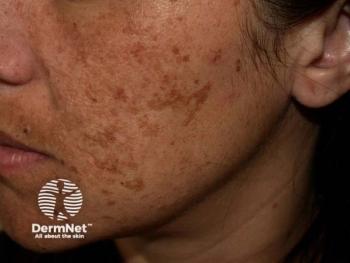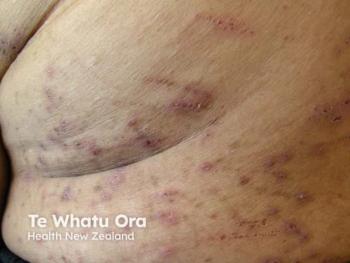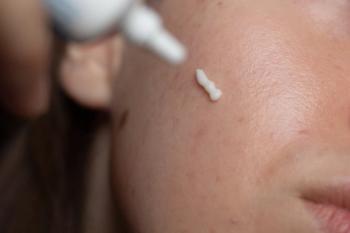
Derm Dispatch: Adam Friedman, MD, FAAD, Unpacks the Science Behind CBD’s Role in UV Protection
Renata Block, DMSc, MMS, PA-C, interviews Adam Friedman, MD, FAAD, about his research into cannabidiol’s photoprotective potential, clinical trial design, and future directions.
In a recent episode of Derm Dispatch, host Renata Block, DMSc, MMS, PA-C, sat down with Adam Friedman, MD, FAAD, professor and chair of dermatology at the George Washington University School of Medicine and Health Sciences, to discuss his decades-long journey researching cannabidiol (CBD) and its potential in photoprotection.
The conversation offered a look at the origin story of a topical CBD formulation backed by clinical evidence and how it might one day change the way dermatology clinicians think about sun protection.
"I think we have got to take a step back even further in terms of, 'How do I even get into this space?'" Friedman said. "It’s often by accident."
From Curiosity to Clinical Trials
Friedman’s interest in cannabinoids was sparked by a former resident, Liz Robinson, MD, who shared her research on synthetic cannabinoids in dermatomyositis. While topical delivery was a challenge due to CBD’s lipophilic nature, it was that very difficulty that intrigued him.
"If you tell me I can’t deliver it, I want to deliver it more than anything," Friedman said.
With a background in nanotechnology drug development, Friedman had the tools to take on that challenge. The 2018 Farm Bill opened new research pathways by legalizing CBD with less than 0.3% THC, allowing him to move forward with work that was previously stalled due to regulatory constraints.
Why Photoprotection?
The idea to study CBD’s role in photoprotection came unexpectedly. A Mexico-based company, Mino Labs, producing high-purity CBD, approached Friedman and his longtime mentor, Brian Berman, MD, PhD, with a goal: validate their ingredient’s efficacy through real science, not marketing hype.
Polypodium leucotomos supplements like Heliocare helped shape the study’s direction. Friedman noted that while early studies were solid, copycat products diluted credibility in the space.
"Unless you do the work, you cannot piggyback on someone else’s investment of time and genius and energy," he warned. "I think consumers need to be aware of that."
Inside the Clinical Trial
Unlike most CBD research stuck in preclinical models, Friedman’s study involved an IRB-approved clinical trial with 18 subjects. It tested a nanoparticle-encapsulated CBD cream using a split-site model in which patients served as their own controls.
Participants applied either vehicle cream or active cream to protected skin areas twice daily for 2 weeks, followed by UVA exposure. The team then analyzed biopsies for visible inflammation, epidermal thickening, and DNA-level changes, particularly a UVA-induced mitochondrial mutation called "the common deletion."
The findings were published in the Journal of the American Academy of Dermatology, and the topical formulation is now available commercially under the brand
Still, Friedman emphasized that it is not a sunscreen substitute: "My hope is that people look at this as sunscreen’s best friend. No sunscreen is 100% perfect. It doesn't mean no sunscreen is necessary; it means we need to have a little bit of a backup plan, and that's kind of the point of this."
Commercialization and Regulatory Roadblocks
Despite the promising data and product launch, Friedman acknowledged the uphill battle in getting CBD products to consumers due to regulatory gray zones.
"Even though technically this is legal...a lot of the major outlets through which you would push your products didn’t want anything to do with it," he explained.
"We are undermining a space that could be so impactful from a medical perspective and hindering research and science."
Major retailers and social media platforms still place restrictions on cannabinoid marketing, limiting visibility and scale. Compared to Canada, where regulations are more relaxed, the US remains "very behind," he said.
What’s Next for CBD in Dermatology?
Friedman hopes this successful entry into cosmeceuticals will build momentum toward prescription drug development, particularly in cutaneous lupus, where topical treatment options are virtually nonexistent.
"There is no FDA-approved topical lupus treatment," Friedman said. "Our work in anandamide is focusing on cutaneous lupus... and we’ve shown in a mouse model that we could treat it topically."
The team is now collaborating with Penn dermatologists through an NIH-funded SBIR grant to further pursue this avenue.
While the CBD product’s road to market has been long—over 20 years since Friedman first developed the core nanotechnology as a third-year medical student—he says the greatest reward is seeing it come to life.
"The most exciting piece of this is knowing that people are applying something on their skin that I invented," he said.
Newsletter
Like what you’re reading? Subscribe to Dermatology Times for weekly updates on therapies, innovations, and real-world practice tips.


















